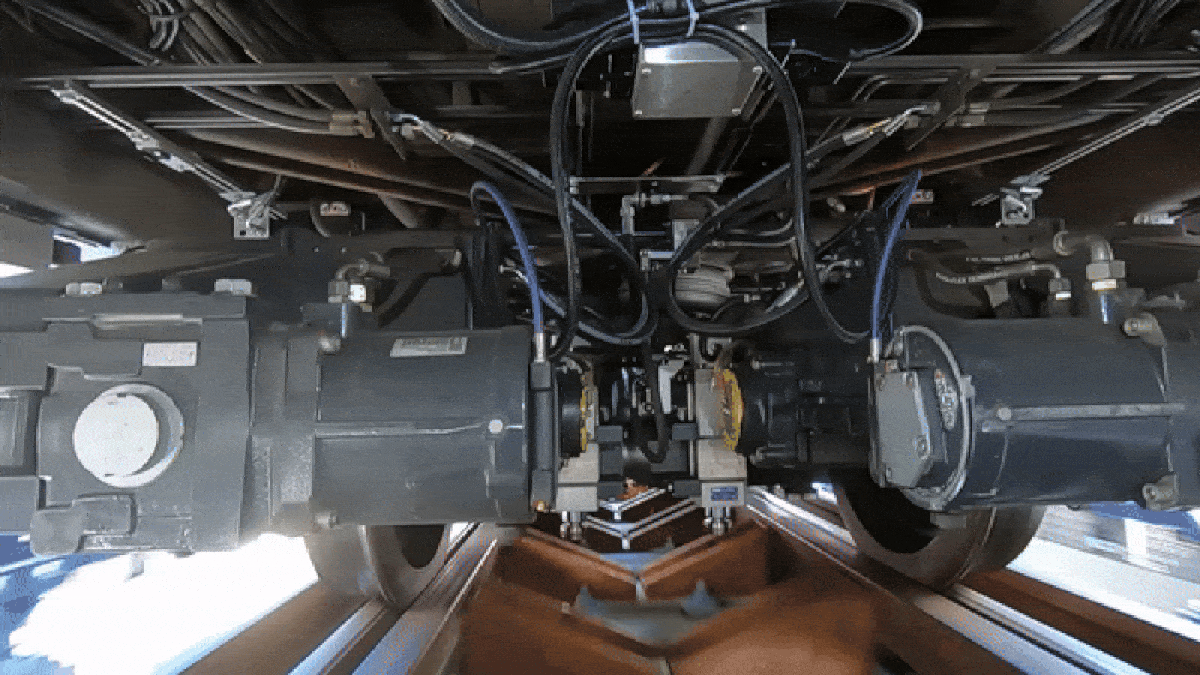American trains are pretty simple beings, really. They carry people from A to B in rudimentary comfort with very few bells and whistles. That isn’t the case with rail travel overseas though, and trains in Switzerland even come with the ability to run on different width tracks thanks to some very clever wheels.
The trains in question operate across two lines in Switzerland, one that runs on track that’s about four-feet and eight-inches wide and another that’s three-foot and four-inches. In the past, it would have been tricky to pass between these two lines, as you’d either have to swap onto a different train or wheels would need to be swapped out.
Switzerland didn’t want to do that, though, so now has some very clever trains that can make themselves wider in order to run across both lines, as the International Railway Journal reports:
The new GoldenPass Express (GPX) trains have been designed and built by Stadler to undertake the through Montreux – Gstaad – Zweisimmen – Interlaken journey in 3h 15min. In March 2018, the Montreux Oberland Bernois Railway (MOB) awarded Stadler a contract to supply 20 variable-gauge coaches for GPX services.
The Golden Pass route is operated by both the 1000mm-gauge MOB and the 1435mm-gauge Bern–Lötschberg–Simplon Railway (BLS), with the MOB up till now using both modern panoramic trains and a classic “Belle Epoque” train recreating the appearance of the narrow-gauge Pullman cars operated by the Compagnie Internationale des Wagons-Lits (CIWL) on the route for a short time in the late 1920s. Introduction of the new trains and the start of through services will end the need for passengers to change at Zweisimmen.
For anyone that doesn’t speak European, the change in track width means that the bogies (which house train wheels) of locomotives operating on this service must increase or decrease by more than a foot. While widening, the trains must also raise their ride height to match the platforms on the other section of track, which leads to quite the choreographed maneuver for the trains.
A specially-designed ramp is key to the switch for these trains, as RailTech explained when they entered service. The change takes around eight minutes for the three trains that operate on this line, as the site explained:
When the train arrives from the metric gauge tracks at Zweisimmen station, the train passes over a gauge adapting ramp at a speed of 15 km/h and flaps are raised to allow the coach to position itself. With the weight of the coach relieved from the bogies, their wheel width can extend from 1000 mm to 1435 mm. At the same time, the body is raised from 350 mm to 550 mm to adapt to the platform height. Because of the difference in voltage, the locomotive is changed. The gauge width change in total takes eight minutes: crossing the ramp only takes a few seconds, and most of the time is required for the change of locomotives and related checks.
In total, there are 46 sets of bogies in service that can carry out this neat trick, with additional sets kept as spares in case of emergencies. Three trains make use of the system, with around four round trips a day currently operated on the line.
Honestly, it’s amazing what you can accomplish when you throw around $90 million at the rail industry. Imagine what we could have over here with a well-funded railway!


